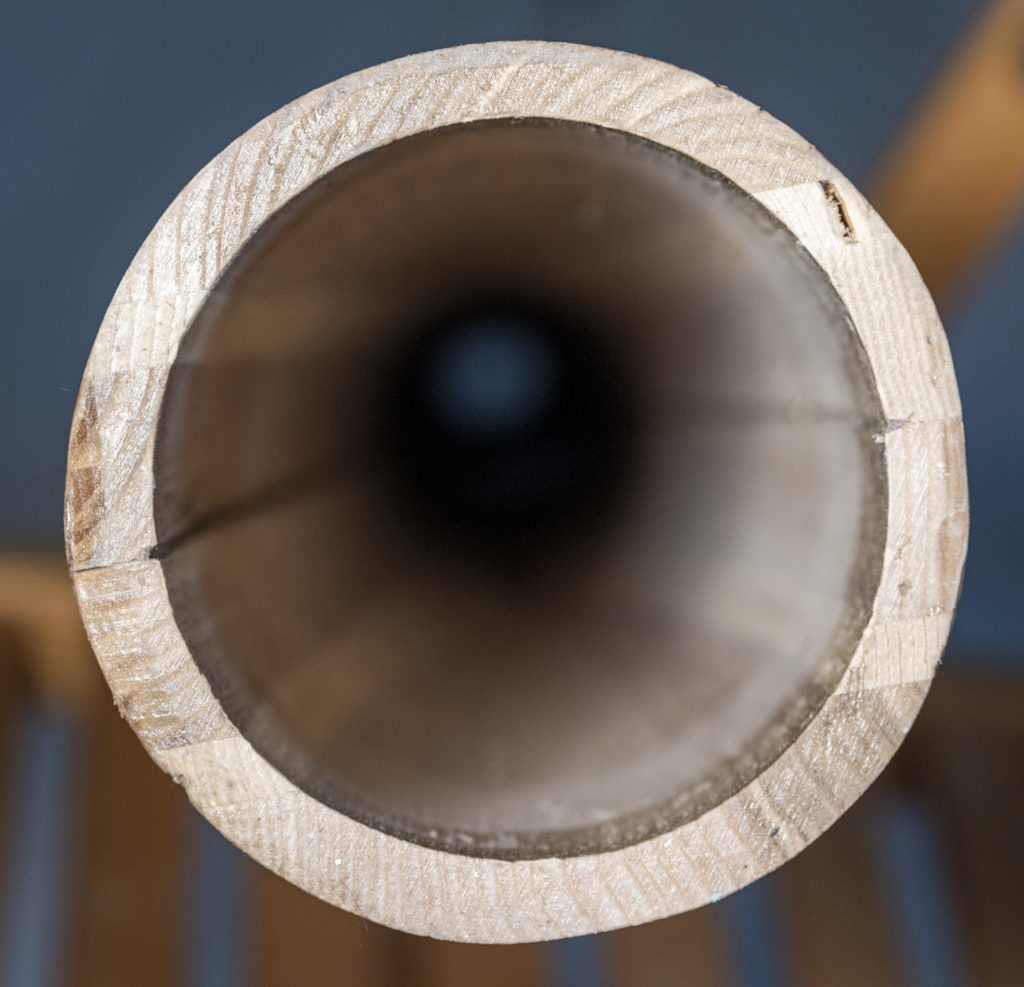One of the most important dilemma in didgeridoo makers comes from time to time as question.
Fredrik Claesson asks, realted to this article:

I’m really impressed with the time and effort you put in to really understand what the shape is doing to the sound on a really accurate level. Question: when I make didgeridoos I tend not to make the wall thickness even and around 1 cm thick as I think those didgeridoos tend to vibrate more and add something to the sound. Is this actually only needed for a small part of the didgeridoo or it is not necessary at all since only the internal shape that matters? Regards from Sweden
My answer:
Hello Fredrik, first of all, thanks for your nice words.Nice question. I try to be as fair as I can since I know it is a topic that can touch the emotive sphere of someone.
About this topic, I would introduce myself to those who will be skeptical. I started making didgeridoos 18 years ago. Taking advantage of some suggestions from Ansgar Stein in 2004 I started making fiberglass didgeridoos when they were not popular like nowadays. I already understood that material was not so crucial for didgeridoo like it is for other instruments.
Then I spent my vast passion and effort to understand correctly where to spend them. Did I really need to experiment with materials, thickness, and much more to improve/modify the sound, or I had to discover the potential of shapes? In the beginning, I got more results working on the shape. Through the years, when I wasn’t able to continue on my own, I wrote and collaborate with the science university in my city. After 10 years I started working on physics analysis for my company, mostly about vibrations. In the last 3 years, in the same company, I’m continuing analysis on vibroacoustic analysis about several systems.
Due to my knowledge, I lead a group of engineers on two main fields: resonators and everything about cavities and psychoacoustics.
So I can say with a good grade of confidence the sound perceived by the audience is not affected by wall thickness, obviously, the body has to be enough stiff to collapse. On the other hand, stiffness, mass, and thickness can affect the player’s perception.
I give you a tip to experiment on your own. Take a contact microphone and amplify it with any loudspeaker. Move the mic from the mouthpiece to the bell. You should immediately recognize the didgeridoo body mostly vibrate close to the mouthpiece and it loses the transmissibility potential as soon as you move to the bell. A so small portion of the instrument and the acceleration magnitude is not sufficient to add something to the color tone. In this case, any sound around the mouthpiece area will be masked by the sound at the bell. Not for this point but for something different the player perception is different. The mouthpiece and lips vibrations move from the lips through the skull to the ears. A player hears a mix of the internal sound (structure-borne) and the sound from the bell (airborne). A player can’t cut the structure-borne from his perception. He would be obliged to ask someone else to play the same instrument. But he can cut the air-born sound with hearing protection or something that works similarly. In this case, he will listen to something closer to the face bass, invented by Charlie McMahon.
So, if you still want to work on wall thickness, this is the field you can work on. I’m starting doing the same since I have bought the CNC machine to work several materials… and since I can’t work more than I did on the shape. Hope you find this answer useful. On the net, you’ll find lots of material but it would have been a mess to join all the information together for the didgeridoo. If I can help you, please ask me ![]()
PS: I know some people won’t believe me, and I assumed the following position. If they don’t believe it, it is ok. It’s anyway nice to do not to break the magic aura of this instrument. In case I receive a well-reasoned message based on the same knowledge I will be pleased to read it. Sometimes I find materials that give me new ideas.
Andrea Ferroni www.andreaferroni.it
Windproject didgeridoos www.windproject.it